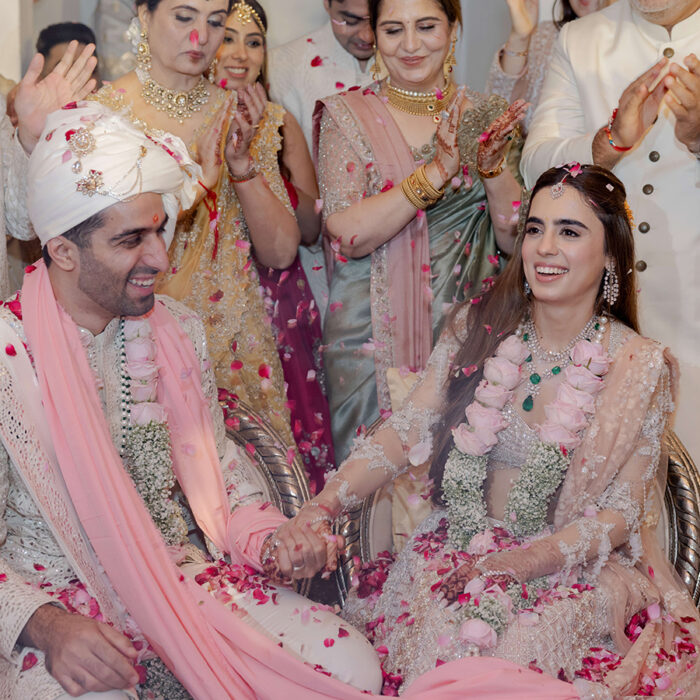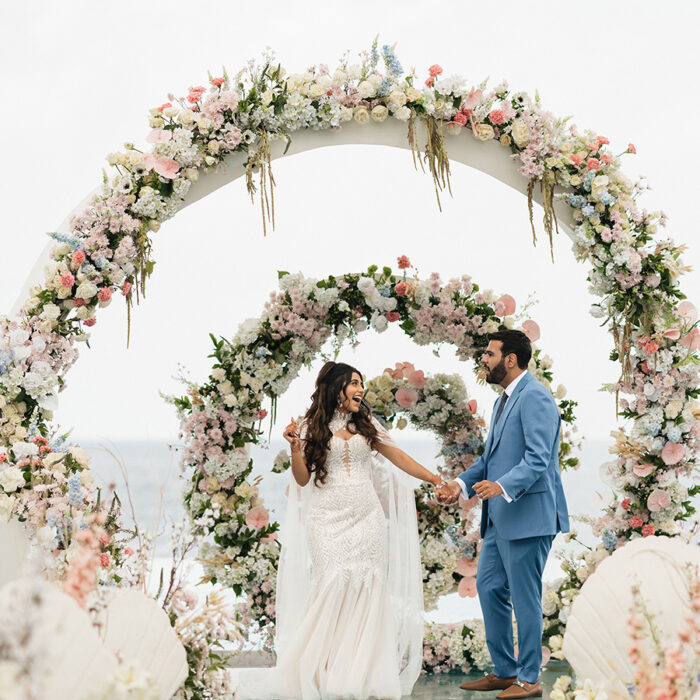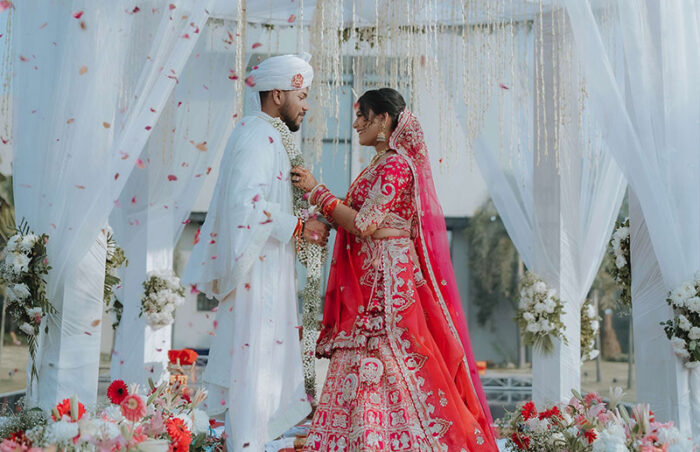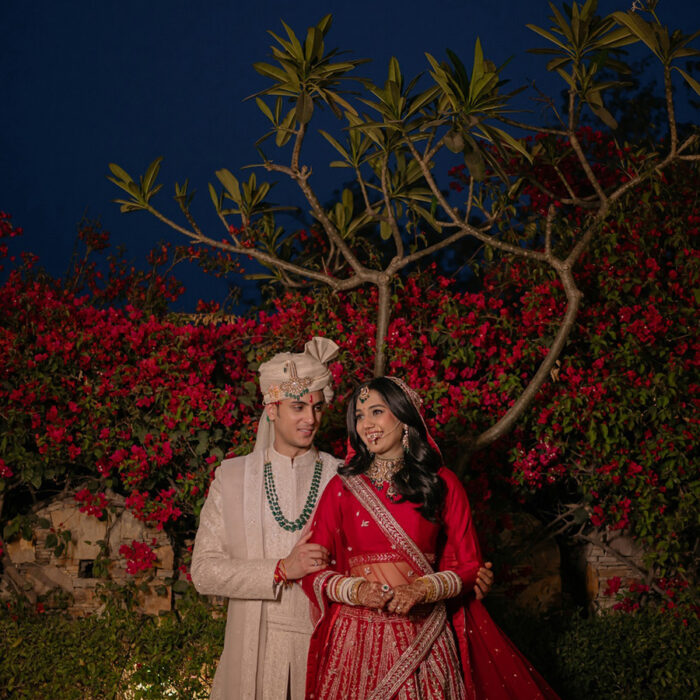Bengali Weddings: Customs and Traditions
Rituals, customs, style and more! Here's everything you need to know about Bengali weddings.
Regional art, poetry, music – these have been an indelible part of Bengali culture for decades. When it comes to weddings, Bengalis have their own timeless, distinctive and dramatic customs. In this installment of Wedding Tradition Series, we explore the beauty and blend of elements that go into Bengali nuptials such as customs, cuisine and couture.
As many couples are opting to add their personal take to traditional proceedings, and as the number of intercultural weddings rise, we aim to answer your questions about weddings in specific regional cultures of India. Here, you are invited to step into the dazzling, dramatic world of Bengali weddings!
Wedding Functions
Aashirbaad (Engagement & Gifting)
Akin to an engagement ceremony, the ‘Aashirbaad’ ceremony signifies the acceptance of the couple by each other’s families. It can be held anytime, from solidifying the match to right before the wedding if convenient. Even though the ceremony is meant to be a formal engagement, it does not necessarily include a ring exchange. The bride and groom are blessed with husked rice and trefoil leaves and showered with gifts such as clothes, jewellery and money by their respective in-laws.
 Photos Courtesy: Jeevansathi
Photos Courtesy: Jeevansathi
Aiburo Bhaat (Bridal Party/ Bachelor Party/ Last Meal before Wedding)
One of the most awaited functions for the groom or bride-to-be, the ‘Aiburo Bhaat’ is akin to a bridal shower or a bachelor party. The to-be-weds are offered a sumptuous, traditional Bengali feast as their last official meal before the wedding, while their loved ones sing, dance and make merry. Today, borrowing from popular North Indian functions, many couples club this ritual with a mehndi or sangeet function.
 Photos Courtesy: BookEventz
Photos Courtesy: BookEventz
Gaye Hollud (Haldi)
Held on the morning of the wedding, the haldi ceremony or ‘Gaye Holud’ is an intimate ceremony with just loved ones in attendance. The groom is first smeared with turmeric paste by seven married women of his family, after which the same turmeric paste, along with ‘Tatva’ or gifts, are sent to the bride’s house. Gifts could include fragrant oils, sarees, beauty products, sweets and an auspicious, artfully decorated fish. The bride is then covered with turmeric paste by the married women of her family, before she bathes in the water procured by her mother and other women of the family from a river or pond. This ritual often gets adapted to different locations and situations as per the family’s convenience.
 Photos Courtesy: Wedding Mania
Photos Courtesy: Wedding Mania
Sankha Porano (Bangle ceremony)
Similar to the mangalsutra which signifies that a woman is married, the ‘Sankha’ and ‘Pola’ are conch shell bangles that are worn by married Bengali women. After the Holud ceremony, the bride has to wear these bangles after they have been dipped in turmeric water during the ‘Sankha Porano’ ritual.
 Photos Courtesy: Jeevansathi
Photos Courtesy: Jeevansathi
Bor Jatri (Baraat)
‘Bor Jatri,’ or baraat, is the groom’s joyous procession to the wedding, where his beautifully dressed friends and families sing and dance till they reach the entrance of the wedding venue. There they are received warmly by the bride’s family, led by her mother who welcomes them with an aarti, sweets, and drinks.
Potto Bostro (Groom’s arrival)
Once the groom arrives at the mandap and is seated, an elder male member of the bride’s family, (her father or maternal uncle who will give away the bride), presents the groom with the auspicious attire that needs to be worn during the nuptials.
 Photos Courtesy: Weddings Pictures
Photos Courtesy: Weddings Pictures
Saat Paak (Bride’s arrival)
Now comes the ritual most popularly known and loved in a Bengali wedding – the ‘Saat Paak.’ In this ceremony, the bride has to sit on a low stool which is carried by her brothers seven times in a circle around the groom. She has to coyly cover her face with betel leaves during the process.
 Photos Courtesy: The Wedding Story
Photos Courtesy: The Wedding Story
Subho Drishti (First Glance)
After the completion of the ‘Saat Paak’ circles, the bride and groom are brought face to face at the ‘Subho Dhristi’ ritual where she slowly lowers the betel leaves and gazes at her groom’s face for the first time. This tender moment of love is celebrated with a grand cheer from their family amidst the blowing of conch shells and ululations.
 Photos Courtesy: The Wedding Story
Photos Courtesy: The Wedding Story
Maala Bodol (Garland Exchange)
The quintessential ‘varmala’ (garland) ceremony is where the bride and groom put beautiful floral garlands on each other. In Bengali weddings, the garlands are exchanged three times, whereas in other cultures, it is exchanged only once.
 Photos Courtesy: Ayan Mukherjee
Photos Courtesy: Ayan Mukherjee
Somprodan (Giving Away ritual)
One of the most auspicious rituals of the ceremony, the ‘Somprodan’ marks the moment where the bride’s father, or a senior male member of the family, officially gives her away to the groom. He ties their hands with a holy thread to the symphony of the vedic chants, and this thread is not untied for the rest of the wedding.
 Photos Courtesy: Tour my India
Photos Courtesy: Tour my India
 Photos Courtesy: Shutterbug Film Company
Photos Courtesy: Shutterbug Film Company
Soptopodi (Phere)
As the priest chants vedic verses in front of the holy fire, the bride and groom take seven circles around it on foot, thereby solemnizing their union.
 Photos Courtesy: The Wedding Story
Photos Courtesy: The Wedding Story
 Photos Courtesy: Shutterbug Film Company
Photos Courtesy: Shutterbug Film Company
Onjoli (Offering Tribute)
The bride and groom offer their thanks in tribute to the holy fire with puffed rice. The groom stands behind the bride and holds her hands, while she tips the rice on a chaff into the fire.
 Photos Courtesy: Qpid India Photography and Lumiere Wedding Company
Photos Courtesy: Qpid India Photography and Lumiere Wedding Company
Sindoor Daan and Ghomta
To mark the end of the wedding rituals and the beginning of their new life as man and wife, the groom smears the bride’s hair parting with ‘sindoor’ (vermillion), and covers her head with a red veil, generally a saree.
 Photos Courtesy: Qpid India Photography
Photos Courtesy: Qpid India Photography
Things You Will See at Bengali Weddings
Like all weddings, Bengali weddings include many authentic local practices and customs that have survived through the ages.
Conch Shell Sounds
An instrumental part of all Bengali auspicious rituals, the unique sound of conch shells often reverberate through various festivities. Their shrill sounds imbue the atmosphere with serenity and spirituality.
 Photos Courtesy: Getty Images
Photos Courtesy: Getty Images
Ululation
Another fascinating aspect of Bengali weddings is the ululation. Made by striking both cheeks with your tongue in a high pitched sound, this custom is said to ward away all negativity and attract prosperity for the couple. Entertaining and very memorable to witness, this unique custom makes for a memorable experience.
Spectacular Cuisine
Famous for their love of food, Bengalis set up an enviable spread to mark their happy occasions. Every guests relishes the rich, traditional dishes of meat, fish, vegetables, rice, sweets and other local delicacies.
 Photos Courtesy: Yours truly and Maumita Paul
Photos Courtesy: Yours truly and Maumita Paul
Rich Silk Sarees
Rich Banarasi sarees in myriad colors and featuring exquisite threadwork are preferred for Bengali weddings over other popular options like lehengas and suits.
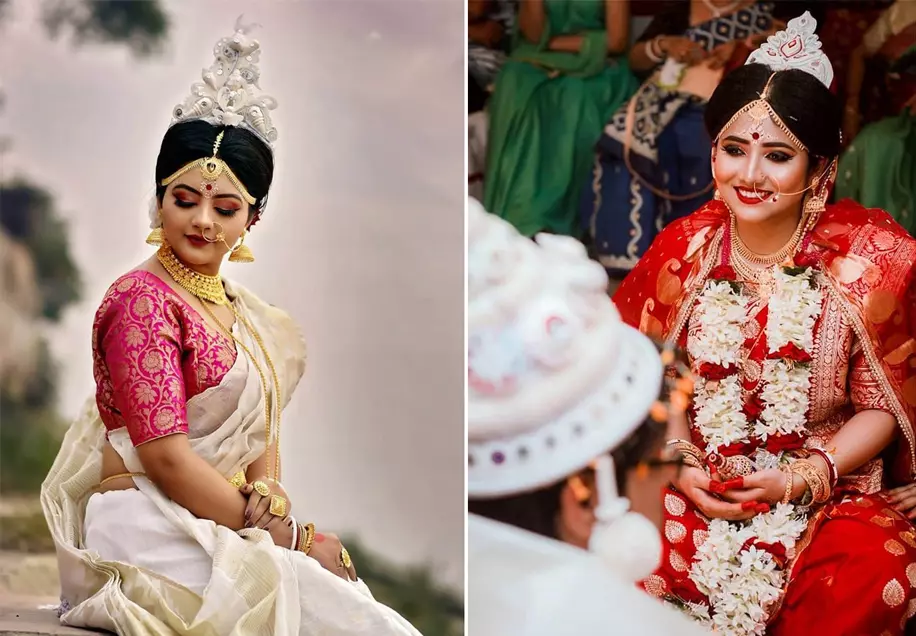 Photos Courtesy: Sourav Paul and The Wedding Chronicles
Photos Courtesy: Sourav Paul and The Wedding Chronicles
Style Tips to Look Sensational
Banarasi Sarees
Skip your regular lehengas for a Bengali wedding, and instead, drape six yards of rich silk around you. The rich sheen and regal vibe of Banarasi Sarees make them a perennial favorite with all.
 Photos Courtesy: Nayantara Parikh
Photos Courtesy: Nayantara Parikh
Vibrant Colors
While every wedding has its own themes and color palettes, a Bengali wedding is all about vibrance so bright is always right!
 Photos Courtesy: Kalyanam Paris
Photos Courtesy: Kalyanam Paris
Embrace Red
The color of beauty and prosperity, the quintessential bridal red is adored by almost all Bengalis brides. Not only does it make a statement, it also brings out one’s inner glow like no other color can.
 Photos Courtesy: Reels And Frames and Qpid India Photography
Photos Courtesy: Reels And Frames and Qpid India Photography
Big Bindis
The very symbol of Bengali beauty, a large red bindi is a signature accessory for a festive Bengali look. You can opt for a smaller red one at first if you are unsure of sporting a statement large one.
 Photos Courtesy: The Wedding Canvas and Tamajit Das
Photos Courtesy: The Wedding Canvas and Tamajit Das
Bengali Handloom Sarees
A treasure trove of heritage and craftsmanship, heirloom sarees from Bengal are no less than handcrafted wonders. Add a beautiful Jamdani or Baluchari saree to your wedding trousseau as it will always remain in vogue.
Dhoti (for men)
Men can swap their suits and sherwanis for traditional kurtas and dhotis to truly look authentic at a Bengali wedding.
 Photos Courtesy: Qpid India Photography
Photos Courtesy: Qpid India Photography
Traditional Gold Jewellery
Nothing enhances the richness of heirloom silk sarees like traditional gold jewellery.
 Photos Courtesy: Qpid India Photography
Photos Courtesy: Qpid India Photography
To start planning your wedding, click here.
